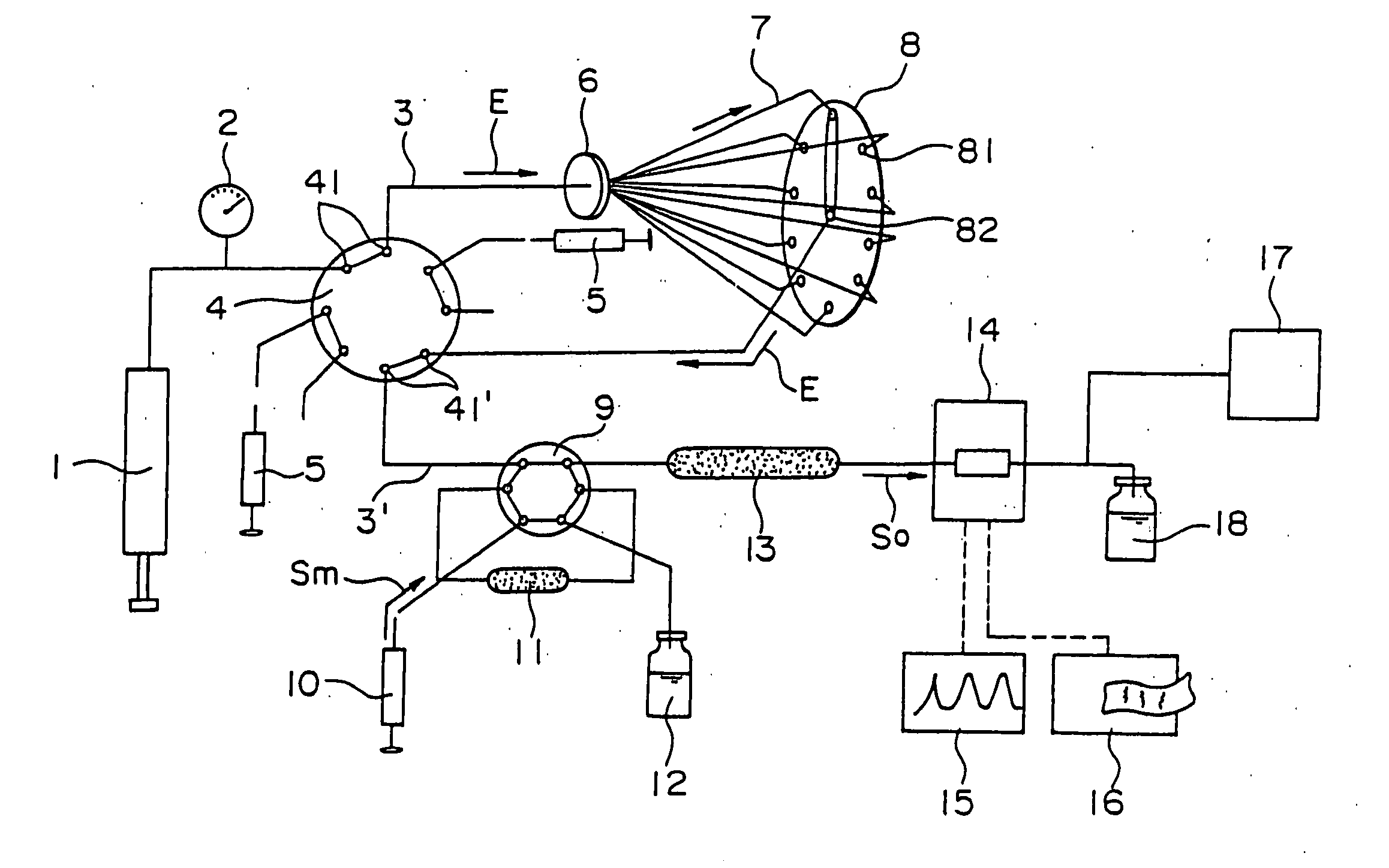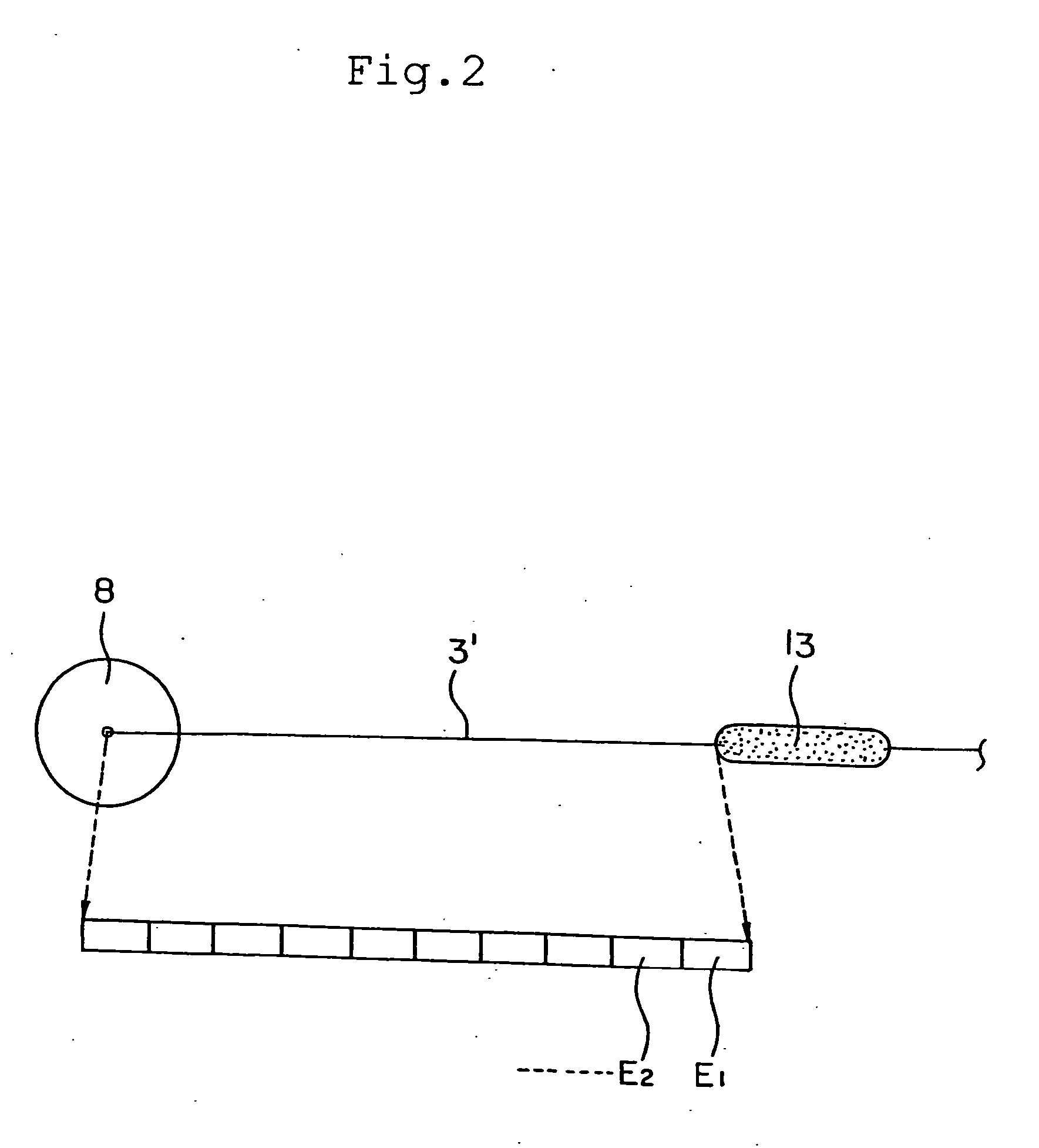Liquid chromatograph and analysis system
a liquid chromatograph and analysis system technology, applied in the field of liquid chromatographs, can solve the problems of difficult operation of hplc, difficult to confirm whether the flow is flowing, and the gradient elution cannot be hardly performed at high precision, so as to achieve the effect of effective separation and detection within a short time, high sensitivity, and prolonging the elapsed time for detection
- Summary
- Abstract
- Description
- Claims
- Application Information
AI Technical Summary
Benefits of technology
Problems solved by technology
Method used
Image
Examples
example 1
[0049] A methanol solution of acetone was used as an eluent and the gradient change when the concentration of acetone in the methanol was changed by 10% was investigated using a UV detector at each of flow rates of 500 nL / min, 300 nL / min, and 100 nL / min.
[0050] In this experiment, the trap column 11, the separation column 13, and a mixing device were not used.
[0051]FIG. 3 is a diagram (graph) that shows a base line drawn by the recorder 15 in Example 2. As shown in this gradient line, a stable gradient change is shown at each of the flow rates of 500 nL / min, 300 nL / min, and 100 nL / min. In particular, even at a low flow rate of 100 nL / min, a linear base line can be formed and thus it is enough to attain a linear gradient change of the eluent.
example 2
[0052] Using a mixing device, a methanol solution of acetone was used as an eluent and the gradient change when the concentration of acetone in the methanol was changed was investigated using a UV detector at each of flow rates of 300 nL / min and 100 nL / min.
[0053]FIG. 4 is a diagram (graph) that shows a base line drawn by he recorder 15 in Example 3. As shown in this gradient line, a stable gradient change is shown at each of the flow rates of 300 nL / min and 100 nL / min. In particular, even at a low flow rate of 100 nL / min, a linear base line can be formed and thus it is enough to attain a linear gradient change of the eluent.
example 3
[0054] An experiment was carried out in order to prove that the analysis system of the present invention permits a high sensitive analysis of a peptide.
[0055] The sample used was a product of digesting calmodulin with the enzyme trypsin (a calmodulin trypsic digest) and the amount thereof was 150 fmoles.
[0056] The eluent used was one that comprises water, acetonitrile, and formic acid. The injection amount of the sample was 60 nL. The sample was directly introduced into a separation column. The flow rate was 300 nL / min. Furthermore, the range of molecular weight measured by a mass spectrometer was in the range of 600 to 1,500 Daltons.
[0057]FIG. 5 is a diagram (a graph) shows a chromatograph of each mass component contained in the calmodulin trypsic digest. As various kinds of mass components form the respective sharp peaks, so that the separation of each sample component can be clearly found.
[0058]FIG. 6 is a diagram (a chromatograph) showing the results in which a peptide with ...
PUM
| Property | Measurement | Unit |
|---|---|---|
| flow rate | aaaaa | aaaaa |
| diameter | aaaaa | aaaaa |
| volume | aaaaa | aaaaa |
Abstract
Description
Claims
Application Information
 Login to View More
Login to View More - R&D
- Intellectual Property
- Life Sciences
- Materials
- Tech Scout
- Unparalleled Data Quality
- Higher Quality Content
- 60% Fewer Hallucinations
Browse by: Latest US Patents, China's latest patents, Technical Efficacy Thesaurus, Application Domain, Technology Topic, Popular Technical Reports.
© 2025 PatSnap. All rights reserved.Legal|Privacy policy|Modern Slavery Act Transparency Statement|Sitemap|About US| Contact US: help@patsnap.com



